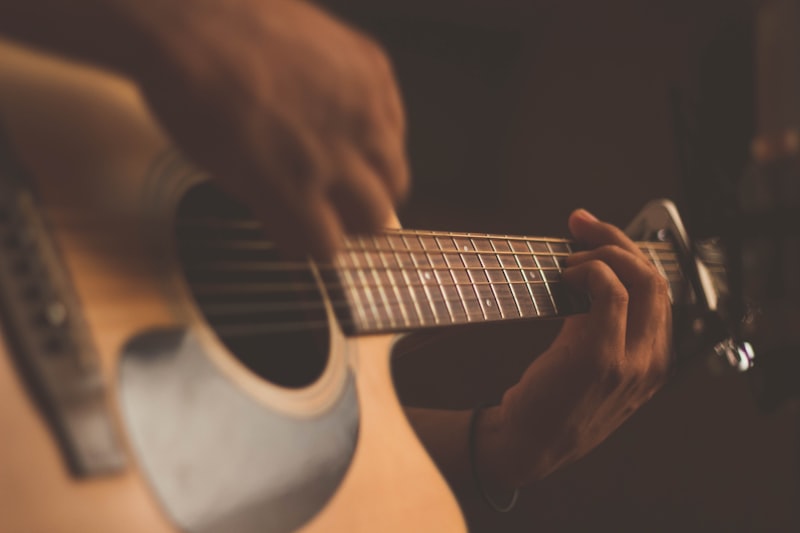Exploring the Impact of Music on Community Health and Well-being

Music is a powerful force that has the ability to touch our hearts, uplift our spirits, and bring people together. But did you know that music can also have a profound impact on community health and well-being? In this article, we will delve into the fascinating world of music and its positive effects on individuals and communities.
One of the remarkable aspects of music is its ability to evoke emotions and create a sense of connection. Whether it’s a catchy tune on the radio or a live performance, music has a way of resonating with us on a deep level. This emotional connection can be especially beneficial for those experiencing mental health challenges or feelings of isolation. It provides an outlet for self-expression and can serve as a therapeutic tool for healing and coping.
Moreover, music has the incredible power to unite people from diverse backgrounds. It transcends language barriers and cultural differences, fostering a sense of belonging and promoting social cohesion within a community. When individuals come together to create or enjoy music, they form connections and build relationships that contribute to a stronger and healthier community fabric.
Research has shown that engaging with music has numerous physical and psychological benefits. Listening to music can reduce stress levels, lower blood pressure, and even alleviate pain. It stimulates the release of endorphins, which are natural mood enhancers, promoting a sense of well-being and relaxation. Additionally, participating in musical activities, such as singing or playing instruments, enhances cognitive abilities, improves memory, and sharpens focus.
In many ways, music is like medicine for the soul. It has the power to heal, inspire, and transform lives. From music therapy programs in hospitals to community choirs and orchestras, initiatives that harness the potential of music are gaining recognition worldwide. They are bringing people together, promoting well-being, and creating a healthier environment for everyone involved.
So, whether you’re tapping your feet to a catchy beat or singing along to your favorite song, remember that music has a profound impact on both individuals and communities. Its ability to heal, connect, and uplift is truly remarkable. So why not embrace the power of music and let it become a vibrant thread that weaves through the tapestry of community health and well-being?
Harmonious Healing: How Music Positively Impacts Community Health and Well-being
Hey there! Have you ever wondered how music can have a profound impact on our health and well-being? It’s truly fascinating how something as simple as listening to your favorite tunes can bring about positive changes in your life. In this article, we’re going to explore the concept of harmonious healing and delve into how music can positively influence community health and well-being.
Imagine this: you’re feeling stressed after a long, tiring day. You put on your headphones, play some soothing melodies, and suddenly, you feel a wave of calm washing over you. That’s the power of music. It has the ability to alleviate stress, reduce anxiety, and even lower blood pressure. When we listen to music, our brain releases endorphins, which are natural mood-boosting chemicals that make us feel good. So, next time you’re feeling down, why not turn up the volume and let the music work its magic?

But it doesn’t stop there. Music has the incredible ability to bring people together and create a sense of unity within a community. Whether it’s singing in a choir, participating in a drum circle, or attending a live concert, music has the power to connect individuals from diverse backgrounds. It transcends language barriers and cultural differences, fostering a sense of belonging and togetherness. Think of it as a universal language that speaks to the heart and soul of everyone, regardless of age, gender, or ethnicity.
Moreover, music can be a powerful tool for promoting mental and emotional well-being. It serves as an outlet for self-expression and creativity, allowing individuals to channel their emotions and thoughts into harmonious melodies. Playing an instrument or engaging in singing not only enhances cognitive skills but also boosts confidence and self-esteem. It provides a safe space for individuals to explore their emotions, heal past traumas, and find solace in the healing power of music.
Sound Medicine: Unveiling the Transformative Effects of Music on Community Wellness

Picture this: a vibrant community where people come together, hearts beating as one, immersed in the power of music. The atmosphere is electrifying, a symphony of emotions filling the air. In this article, we explore the captivating world of sound medicine and how it can bring about transformative effects on community wellness.
Imagine music as a key that unlocks hidden doors within us, connecting us on a deeper level. It has long been recognized for its ability to transcend language barriers, cultural boundaries, and socioeconomic differences. But did you know that music holds incredible potential to heal and unite communities?
One remarkable aspect of music’s impact on community wellness lies in its ability to evoke emotions. Whether it’s a catchy melody or soul-stirring lyrics, music has an uncanny way of touching our hearts and souls. It can uplift spirits, soothe troubled minds, and inspire positive change.

Think about the power of a communal singing session, where voices harmonize and blend into a tapestry of unity. It creates a shared experience that encourages social connection and fosters a sense of belonging. Through music, individuals find solace in knowing they are not alone, realizing that their struggles and joys are shared by others in their community.
Moreover, music stimulates our brains, triggering the release of endorphins, dopamine, and oxytocin—the feel-good chemicals responsible for boosting mood and reducing stress. It’s like a natural elixir that can alleviate anxiety, enhance cognitive function, and even relieve physical pain.
In the realm of community wellness, music plays a vital role in therapeutic settings. From music therapy programs in hospitals to community-based initiatives, the healing power of music is harnessed to support individuals facing mental health challenges, trauma, and other conditions. It provides an alternative form of expression, allowing individuals to communicate and process their emotions in a nonverbal, yet profoundly meaningful way.
Music possesses an astonishing ability to transform communities and promote wellness. It bridges gaps, unites hearts, and heals wounds. So, let us embrace the enchanting world of sound medicine, recognizing its potential to revolutionize the well-being of individuals, neighborhoods, and societies as a whole. Together, through the language of music, we can create harmonious communities that thrive on the uplifting power of sound.
From Rhythm to Resilience: The Power of Music in Promoting Community Health
Introduction:
Can you imagine a world without music? It’s like a symphony that resonates with our hearts and souls, transcending language barriers and uniting communities. But did you know that music has the power to go beyond entertainment and actually promote community health? In this article, we will explore the transformative effects of music on individuals and communities, and how it can contribute to building resilience.
The Healing Melodies:
Music has an innate ability to evoke emotions and trigger a range of responses within us. Whether it’s the soothing melodies of classical compositions or the energetic beats of modern pop songs, music has a profound impact on our mood and overall well-being. Listening to uplifting tunes can release endorphins, reducing stress levels and enhancing our mental state. It acts as a therapeutic outlet, allowing individuals to express their emotions and find solace in the rhythm.
Building Connections:
One of the remarkable attributes of music is its ability to connect people. It serves as a universal language that brings individuals from diverse backgrounds together. Through communal singing, playing instruments, or attending concerts, bonds are formed and a sense of belonging is fostered. These connections create a supportive network within communities, strengthening social ties and promoting overall well-being.
Empowering Resilience:
In times of adversity, music has proven to be a powerful tool for resilience-building. Communities facing challenges such as natural disasters or social unrest often turn to music as a means of healing and empowerment. It becomes a symbol of unity, inspiring individuals to rise above their circumstances and find strength in each other. Music can act as a catalyst for positive change, instilling hope and promoting a sense of collective resilience.

Therapeutic Potential:
Beyond the emotional and social benefits, music also holds therapeutic potential. Music therapy, conducted by trained professionals, utilizes the power of music to address physical, emotional, and cognitive needs. It has been shown to improve the quality of life for individuals with mental health conditions, dementia, or chronic pain. By harnessing the rhythm and melodies, music therapy provides a non-invasive and holistic approach to healing.
Conclusion:
Music possesses a unique ability to transcend boundaries and promote community health. Its impact goes far beyond entertainment, touching the depths of our being and igniting a sense of connection and resilience. By embracing this universal language, communities can explore the transformative power of music, fostering well-being, and creating harmonious societies where everyone can thrive. So, let the rhythm guide us towards a healthier and more resilient future.
Striking a Chord: Music’s Surprising Influence on Mental Health in Local Communities
Introduction:
Have you ever experienced an instant mood boost when your favorite song starts playing? It’s not just a coincidence. Music has a profound impact on our mental health, and its influence extends far beyond personal enjoyment. In local communities, music serves as a powerful tool for promoting well-being, fostering connection, and addressing mental health challenges. Let’s dive into how music strikes a chord with the human mind and positively impacts mental health within our neighborhoods.
-
Healing Harmonies:
Music possesses a unique ability to heal and uplift. When we listen to music, our brains release dopamine, a neurotransmitter associated with pleasure and reward. This surge of dopamine can alleviate stress, reduce anxiety, and even alleviate symptoms of depression. In local communities, music therapy programs have emerged as a valuable resource for individuals struggling with mental health issues. Through singing, playing instruments, or simply listening, people can find solace and express their emotions in a safe and supportive environment. -
Uniting Voices:
Music has a remarkable power to bring people together. Whether it’s a local choir, a band jamming in a neighborhood park, or a community music festival, shared musical experiences create a sense of belonging and foster social connections. By participating in musical activities, individuals can combat feelings of isolation and forge meaningful relationships with others who share their passion for music. These bonds act as a support system, enhancing mental well-being and providing a sense of community. Expressive Outlets:
Sometimes, words fail to capture the depth of our emotions. This is where music comes in. It serves as a universal language that allows individuals to express themselves and process complex feelings. For those facing mental health challenges, music becomes a form of emotional release and self-expression. Playing an instrument or composing songs can provide a cathartic outlet for channeling inner struggles into something beautiful. In local communities, music programs and workshops offer individuals a platform to explore their creativity and find solace through melodic expression.-
Rhythmic Inspiration:
The power of music goes beyond the individual listener—it can inspire an entire community to work towards better mental health. Local initiatives and campaigns that leverage the influence of music have gained traction in promoting awareness about mental health challenges. Through benefit concerts, music-themed fundraisers, or even street performances, these endeavors create a space for open dialogue while eradicating stigma surrounding mental health. By using music as a catalyst, communities can engage in meaningful conversations, educate one another, and advocate for improved mental health resources.
Music serves as a potent force in shaping mental health within local communities. Its healing properties, ability to foster connections, and provide expressive outlets contribute to the well-being of individuals facing mental health challenges. Through the harmonious language of music, communities can unite, support, and inspire, creating a positive impact on the mental health landscape. So, let’s embrace the transformative power of music and strike a chord that resonates with all those around us.





